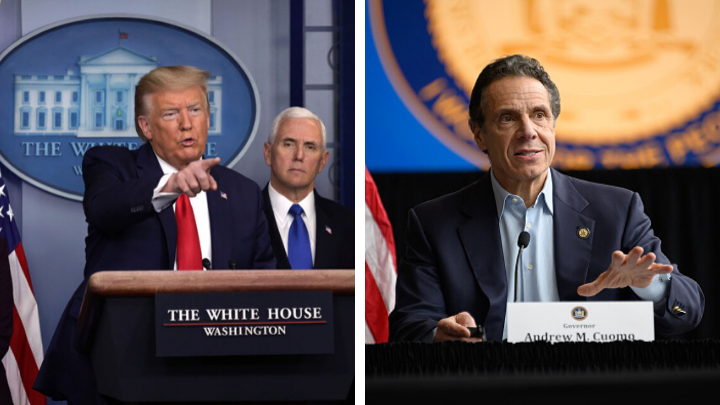A Tale of Two Leaders: Cuomo v Trump
Leaders are judged based on how they deal with their biggest challenges.
In the COVID-19 crisis we see a contrast of leaders so stark that it can serve as a leadership laboratory for future generations to study.

New York Governor Andrew Cuomo shows a steady, compassionate, and urgent tone as he informs New Yorkers and the broader world about the reality of COVID-19 in his state. His briefings are direct, honest, consistent, and clear. He sprinkles his commentary with expressions of concern for health workers and hospital patients, he invokes his parents, his brother, and his daughters. And he tells the truth.
President Donald Trump, on the other hand, shows none of these qualities. He bungled the first two months of the pandemic in the U.S. He denied the severity of the virus and downplayed the risk of contagion. He alternates between the rosy – churches full at Easter – and the gloomy – social distancing for much longer. There is still not a whole-of-government response. Rather, there are fragments of a government response. He leaves it to governors to figure out supply chains, even as governors confess that they’re bidding against each other – and the federal government – to secure desperately-needed medical equipment.
President Trump heaps praise on himself and expects others to do as well. He recently bragged during a COVID-19 press briefing that he was the most popular person on Facebook.
Governor Cuomo, who, according to Politico, has a “long-standing revulsion to social media,” has nevertheless “rapidly emerged as an internet star.” (Earlier this week, #Cuomosexual was trending on Twitter.)
President Trump contradicts his own public health experts, who then have to clean up the mess in his absence. He improvises on the existence of testing equipment, medical equipment, and miracle drugs that don’t exist. He violates every principle of effective leadership in a crisis.
Winston Churchill admonished, “You must look at the facts because the facts look at you.” President Trump ignores the facts in front of him and invents new ones.
Trump insists on calling COVID-19 the “China Virus” or “Chinese Virus” even though the World Health Organization advises against naming diseases for a particular location because of the stigma involved. And last week the FBI warned about a wave of hate crimes against Asians and Asian-Americans in this country.
Since the pandemic started my team and I have been studying the best and worst practices in communicating in a COVID-19 world. The best include:
- Begin all communication, whether written or verbal, with a statement of values: Don’t dive directly into the facts. Create an emotional connection.
- Show you care. Calibrate communication with empathy.
- Be direct, no euphemism: It’s confusing and causes unnecessary stress.
- Tell the truth, the whole truth: Your stakeholders are in this for the long term.
- Address all relevant dimensions of the crisis: A narrow lens is inadequate.
- Remember that expectations are dynamic. Calibrate current expectations.
- Communicate through multiple levels and channels. Be consistent.
- Align on values: Provide detail appropriate to each level and circumstance.
- Convey a positive attitude: Convey urgency short of provoking panic.
- Express emotion, vulnerability, and humility. Effective leaders do.
Governor Cuomo scores on all elements of this scorecard. The President, sadly, misses the mark. Other leaders can learn from both.




Leave a Reply
Want to join the discussion?Feel free to contribute!